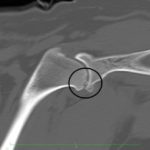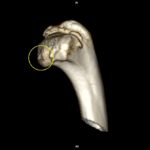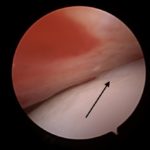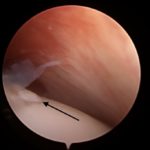Minimally Invasive Surgery: Arthroscopy
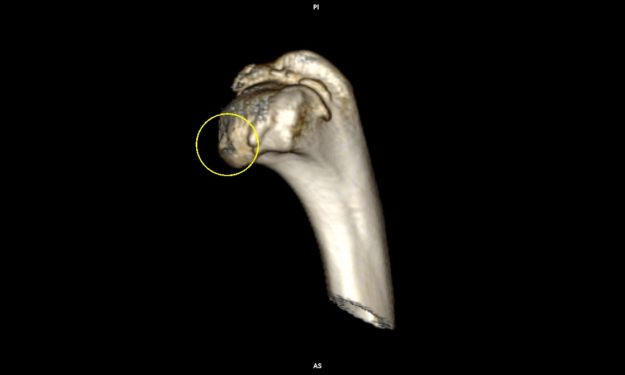
Presentation and Immediate Care
Penny, a 2-year-old spayed female Goldendoodle, presented to her family veterinarian in July for left forelimb lameness that had been persisting despite activity restrictions and anti-inflammatory medications. An X-ray of the shoulder was suspicious of a cartilage lesion in the left shoulder called osteochondrosis. This is a condition where the cartilage does not turn to bone as the bone is growing, and the thicker cartilage area becomes malnourished, resulting in cells dying. This is a developmental lesion that she has had since she was a puppy, but she did not show lameness until over a year of age.
Hospitalization and Treatments
Penny was referred to the Surgery Service at WVRC Racine/Kenosha where she was evaluated by Dr. Travis Reed and found to be painful on left shoulder extension. A CT scan was recommended because not only can dogs can have these lesions in both shoulders, but they are also more likely to have elbow issues as well. X-rays are not always sensitive enough to identify the lesion, where CT shows much more detail.
The CT showed that the only lesion was in the left shoulder, the right shoulder and both elbows were clear. Penny then had arthroscopic surgery to further evaluate her shoulder and identify the diseased cartilage. Arthroscopic surgery is a minimally invasive surgery that requires smaller incisions and less trauma to the tissues around the shoulder than a fully “open” approach. Additionally, the arthroscopic camera provides magnification to see the lesion in greater detail than we can see with the naked eye. The cartilage flap was too large to remove through the small camera incisions, so a mini-arthrotomy procedure was performed to remove the diseased cartilage so the body could place new scar cartilage in its place. After surgery Penny needed 6-8 weeks of rest at home while she healed.
Outcome
Penny recovered well from the procedure. Her incision was healed at 2 weeks postoperatively and by her 7 week recheck she was using the limb very well with no lameness at home and eager to start her return to normal activity!
- CT Image: Circled area shows the irregular joint surface as well as a mineralized fragment in the joint space. (Click to enlarge image)
- 3D Reconstruction: Shows the irregular area in the head of the humerus. (Click to enlarge image)
- Arthroscopic Image: Arrow points to abnormal cartilage, showing subtle difference in color. (Click to enlarge image)
- Arthroscopic Image: Arrow shows the subtle discoloration as well as the irregular contour of the cartilage. (Click to enlarge image)
